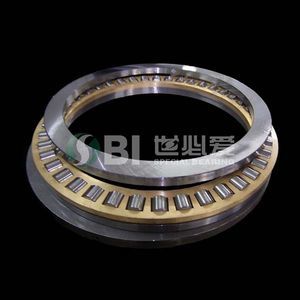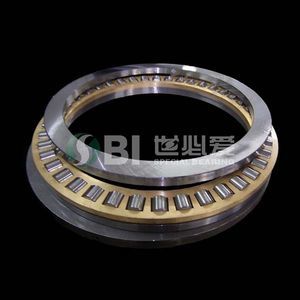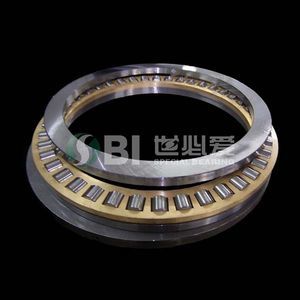
- Power Transmission - Mechanical components
- Bearing and Linear Guide
- Tapered roller bearing
- Luoyang SBI Special Bearing

- Products
- Catalogs
- News & Trends
- Exhibitions
Tapered roller bearing T661radialaxialsteel
Add to favorites
Compare this product
Characteristics
- Rolling element
- tapered roller
- Configuration
- radial, axial
- Material
- steel, brass
- Inside diameter
Max.: 1,290 mm
(50.79 in)Min.: 170 mm
(6.69 in)- Outside diameter
Max.: 1,550 mm
(61.02 in)Min.: 43.8 mm
(1.72 in)- Width
Max.: 175 mm
(6.89 in)Min.: 70.35 mm
(2.77 in)
Description
Thrust bearing is a kind of special bearing that endure the axial force., that is to said the force is parallel to the axial.
Thrust bearing is composed by two or more thrust sheets and more rolling elements. The thrust sheets divied into shaft washer & housing washer, the rolling elements was fixed by the steel or brass cage. Many of thrust bearing is ball thrust bearing.
The shaft washer, housing washer, the cage and balls of thrust bearing are separated. The shaft washer matches to the axial, the housing washer matches to the bearing house. There is clearance between the housing washer and the axial; Thrust bearing just endure the axial load, the unidirectional thrust just endure one-way axial load, bidirectional thrust bearing can endure double way axial load; It can not control the radial displacement of the axial, the limte speed is lower. The unidirectional thrust bearing can control the axial displacement of the axial and the shell in one way, the bidirectional bearing can control the axial displacement of the axial in double way.
Thrust roller bearing endure and axial and radial load, but the radial load is less than the 55% of axial load. Compare to other thrust bearing, it’s friction coefficient is lower, the speed is higher, and have the heart-regulating character.
Catalogs
No catalogs are available for this product.
See all of Luoyang SBI Special Bearing‘s catalogsOther Luoyang SBI Special Bearing products
Thrust bearings
Related Searches
- Rolling bearing
- Steel bearing
- Ball bearing bearing
- Roller bearing
- Radial rolling bearing
- Axial rolling bearing
- Single-row bearing
- Deep groove ball bearing
- Double-row bearing
- Slewing bearing
- Precision bearing
- Cylindrical roller rolling bearing
- Ball bearing slewing bearing
- Cage assembly bearing
- Tapered roller bearing
- Angular-contact bearing
- High-speed bearing
- Sealed bearing
- External-toothed slewing bearing
- Machine bearing
*Prices are pre-tax. They exclude delivery charges and customs duties and do not include additional charges for installation or activation options. Prices are indicative only and may vary by country, with changes to the cost of raw materials and exchange rates.




